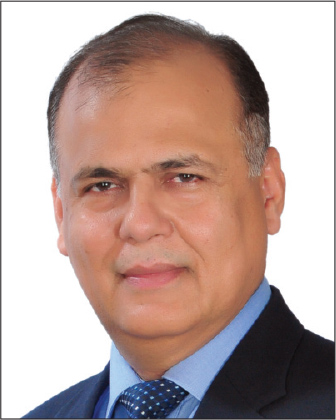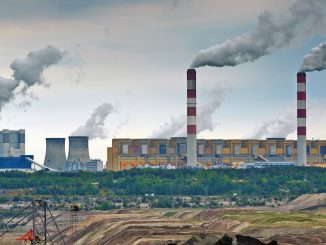 By Ravi Kalra, MD and CEO, Voith Hydro Private Limited
By Ravi Kalra, MD and CEO, Voith Hydro Private Limited
The world has been experiencing extreme weather conditions, leading to disasters in a higher frequency and also severity.
The year 2021 saw a number of such events such as winter storms across the US, which in mid-February affected many southern states that are unaccustomed to cold temperatures, heavy rains in the Australian province of New South Wales leading to once-in-a-century floods, record-setting bush/forest fires across continents and a major storm, stalled over western Europe in mid-July, leading to flash floods and loss of lives as well. The sheer scale of natural disasters has shocked the world as everyone now understands the direct link between these incidents and human-caused climate change.
Energy as the lifeline of human sustenance and evolution has contributed to the degradation of the environment on planet earth in the past. The target of achieving “net zero energy” is the need of the hour. The clock is ticking as societies, governments and organisations across the world are waking up to this requirement now, more than ever before.
In the above backdrop, it is felt that only through significant renewable energy installations can we attempt to achieve the climate change targets of 2050. The installation of wind, solar and hydropower is contributing in a big way to achieving the targets that governments have set for themselves. However, the world is definitely struggling to find large-scale energy storage solutions today, given the variability and uncertainty associated with wind and solar energy generation.
At present, the energy industry and grid requirements are undergoing a transformation and utilities see a need to adapt their businesses in order to continue to achieve their objectives of providing reliable, uninterrupted energy supply. The grids are no longer unidirectional and centralised and, therefore, are more in need of balancing energy.
While there are competing technologies for energy storage available (batteries) and under-development (green hydrogen, the scale and kWh capacities are still limited. Each technology has its own limitations, but with prudent mitigation measures, the negative impact can be minimised. Pumped storage hydropower (PSH) is the onlyproven, cost-effective, large-scale storage solution available in the world.
PSH integration: Key to achieving renewable energy targets
India has set an ambitious target of installing 175 GW of renewable energy by 2022 and 300 GW by 2030. With the current installed capacity of 145 GW, the target requires annual additions of 15-20 GW, making India one of the largest renewable energy developers globally. This is also in line with the requirement to support the targeted annual GDP growth of 7 per cent. In order to compensate the quick-to-install but variable wind and solar power, there is a need for energy on-demand generation. PSH is the only cost-effective solution with proven and established technology, which can store energy during naturally higher generation and release it when required.
Large capacity additions from wind and solar pose challenges in power system management. This necessitates flexibility in managing power supply and demand. PSH incorporates not only the inherent potential of conventional hydropower to provide flexibility but also has the ability to absorb surplus power as the power systems transform from synchronous to asynchronous generation. Also, there is a change from the earlier day-night cycle to the dynamically changing generation patterns of wind and solar all the time, resulting in an additional need for flexible ancillary services.
The current operational capacity of PSH in India is 4,785 MW (approximately 1,500 MW without pumping mode) with 2,780 MW slated to be added soon (under construction). PSH projects of about 8,530 MW are under study/approval. The Central Electricity Authority projects a PSH installed capacity of over 10 GW by 2030 in its Optimal Generation Capacity Mix Report for 2029-30, against a projected solar plus wind capacity of 440 GW, duly supported with battery storage of 25 GW. However, there is a bigger case for PSH as it has many distinct advantages vis-à-vis battery storage as below:
- PSH has a high energy-to-power ratio as a large amount of energy can be stored in reservoirs. In contrast, batteries are for kW to MW range of power requirements. Thus, PSH can provide large-scale storage as well as longer duration of energy.
- PSH can provide power output over a long period of time, running into several hours (up to 12 hours), while batteries have a short charge and discharge cycle, thus providing power for only a few hours (up to 4 hours).
- Once installed, PSH projects last up to 50 years, which is further extendable. In contrast, batteries last at the most for 10 years depending on their maintenance and degrade quickly.
- PSH is certainly the most competitive energy storage alternative on cost-per-kWh basis because of its long life and the large scale of the plant.
Considering the typically different characteristics and duty applications of PSH and batteries, both are suited to different types of requirements and, therefore, should find use in a complementary way. In fact, PSH coupled with batteries could find increasing use.
 Challenges of developing PSH projects in India
Challenges of developing PSH projects in India
Widespread implementation of PSH faces several challenges, some of which are also applicable to the development of large hydropower projects:
- Socio-political issues
- Environmental, and resettlement and rehabilitation issues
- Remote locations and infrastructure issues (in mountainous regions as in large hydropower).
In the recent past, there have been some initiatives by the government that support PSH development such as:
- Definition of storage broadened to include PSH in the Minis-try of New and Renewable Energy’s National Wind-Solar Hybrid Policy
- The National Electricity Policy making reference to peak and off-peak tariffs.
However, these measures are too few to recognise the multiple benefits that accrue from PSH development.
If PSH has to play a significant role in the coming years and provide strong, stable and reliable power in the future power mix of renewable energy from wind and solar, it will require a focused approach and policy initiatives towards its long-term development. Some of the suggestions recently discussed in the World Hydropower Conference organised by the International Hydropower Association are very relevant for implementing in India:
- Assess long-term storage needs now, so that the most efficient options, which may take longer to build, are not lost.
- Ensure consistent technology-neutral comparisons between energy storage and flexibility options.
- Remunerate providers of essential electricity grid, storage and flexibility services.
- Licensing and permitting should take advantage of internationally recognised sustainability tools.
- Ensure long-term revenue visibility with risk-sharing to deliver the lowest overall cost to society.
- Assess and map for PSH among the potential existing hydropower assets and prospective sites.
- Support and incentivise PSH in green recovery programmes and green finance mechanisms.
The success of PSH will depend on support through government policies in order to mitigate regulatory, market and technical challenges. PSH financing remains the key dominant factor in deciding its growth and implementation, despite all the advantages. The projects have a long lead time for installation and a high initial cost. Many of the ancillary benefits of PSH are not even accounted for while evaluating. Most developments of PSH are, therefore, in the public sector/government domain. In order to generate interest in the private sector for investment, these projects will require positive policy interventions and regulations.
The way ahead
What we need in India is the expeditious announcement and implementation of the National Pumped Hydro Storage Policy. The policy should take care of major impediments in the development of PSH projects and propose remunerative differential tariffs for grid stabilisation needs. The investment for such projects that are an essential requirement for grid stability must immediately come from state players in collaboration with hydro PSUs. While there is a case for private sector investment, it will flow only after major policy and regulatory changes are implemented. The energy mix for the country must be balanced year on year and not wait until the problem takes unmanageable shape. The time for investments in PSH is now, so that the returns on investments in terms of service is available in the next three to five years, when we will need them the most.
PSH is clearly the long-term, long-lasting solution to make India the renewable energy superpower and ensure energy security in the future power dynamics situation. It is for the policymakers to take proactive action in this regard to ensure this.
(Note: The views expressed in this article are in the individual capacity of the author and are purely personal. These in no way indicate or state the viewpoints of the organisation.)



